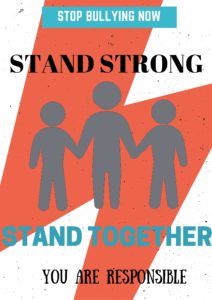Halli Kubes
When you hear the word family, what do you first think of? Personally, I think of a father, a mother and 2.5 children, throw a family pet in there and you have the perfect well-rounded family. Many people still believe that our society is filled with monolithic, “modern” families, when in fact it is quite the opposite of that. Stacey conducted an “ethnographic study, expecting to find that working-class informants would uphold the idea of the “modern” or traditional nuclear family. Instead she found a great deal of variation and fluidity in types of national statistics showing that in 1986 only 7 percent of households fit the pattern of breadwinning father, full-time mother, and at least one child under age eighteen” (Thorne, page 9).
This is exactly how a family is portrayed in the media. Cleaning product advertisements are directed towards the women of the household, because they are the ones who buy cleaning products. As an advertising major, this really resonates with me. Every ad I look at I decipher why they chose the color scheme, the people etc. However, this is not how it is portrayed in many TV series. As a society we still think of the modern family as a mom, dad and 2.5 children. Some TV series such as “Modern Family” have challenged this ideal and this is a step in the right direction.
In Barrie Thorne’s, Feminism and the Family: Two Decades of Thought she looks at how women’s roles have changed over time. Women are still paid less than men on a national average and also do more of the housework (second shift). We are slow to accept these changes overtime. Going back to cleaning product advertisements, it is mostly women featured in them because as Thorne touches on, women are still the ones doing most of the housework. These women also look happy to be doing the work as well. “Many women and men see the doing of housework as what women “properly” or “naturally” do; through cooking, keeping the house clean, and engaging in caring work, women affirm their “gendered relation to the work and to the world””(Thorne, Page 19).
Thorne writes about how women have started to do more, and more and more women have gone into the workforce. This is true for Olympic medalists Noelle Pikus-Pace. The mother of two is a professional athlete, competing in skeleton runs. She has been to the Olympics three times, and this was her final competition. In a news story with NBC, Noelle talks about how it has been challenging to balance training with being a mom, she even brings her kids to the gym with her. In this video you do not see her husband caring for the kids, just her. She was training for the Olympic games and still caring more for her children (women’s work) than her husband, at least in this video. This goes to show that although women have come a long way in the past two decades, there is still a long way to go.
“The literature on domestic labor pursues a troubling question: Given women’s rapid entry into the paid labor force, why haven’t more men, in parallel fashion, increased their contributions to housework and child care? The link between housework and gender, as a division of labor filled with contradictory meanings, has proven to be extremely complex” (Thorne, page 19-20).
Sources:
http://www.nbcolympics.com/video/noelle-pikus-paces-unlikely-training-partners
Barrie, Thorne. “Chapter 1.” Feminism and the Family: Two Decades of Thought. N.p.: n.p., n.d. 2-23. Print.


Recent Comments